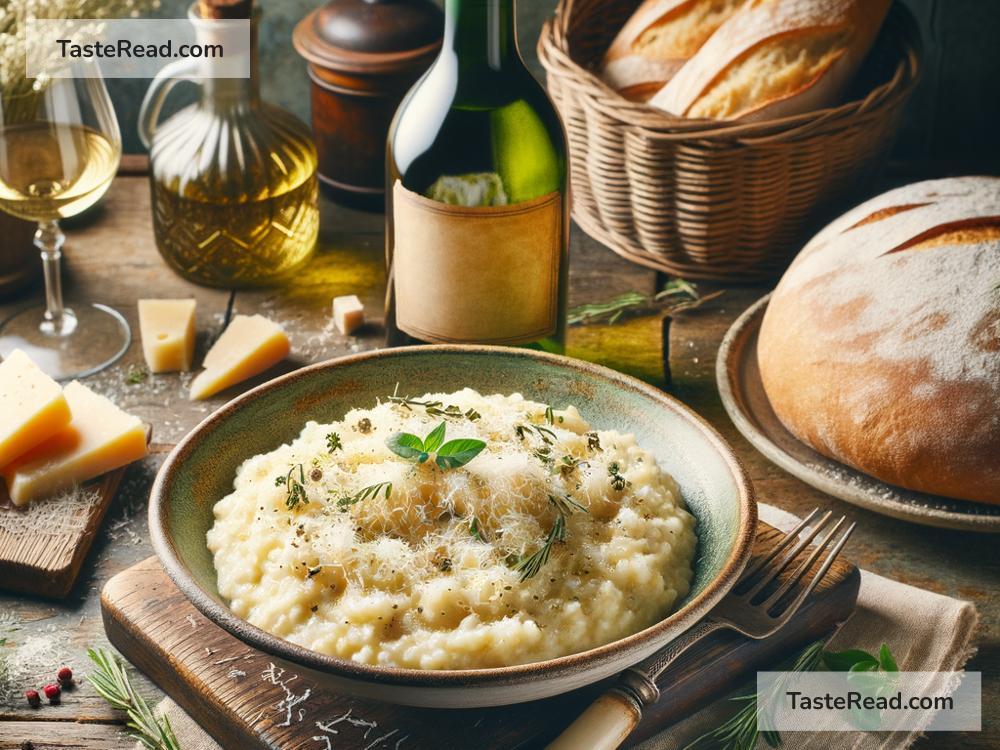The Cultural Significance of the Italian Risotto
Italy is known worldwide for its delicious food. Pizza, pasta, gelato—these are just a few of the dishes that have captured hearts everywhere. Another iconic dish that deserves the spotlight is risotto. Risotto is more than just a creamy rice dish; it is a rich part of Italy’s culinary identity, tied deeply to the country’s history, traditions, and culture.
What Is Risotto?
For those who may not know, risotto is a dish made with short-grain rice cooked slowly in broth until it becomes creamy. The rice is often mixed with ingredients like vegetables, cheese, meat, seafood, or even mushrooms like Italy’s famous truffle. The key to risotto’s unique texture is the special varieties of rice used, such as Arborio, Carnaroli, or Vialone Nano. These types of rice release starch as they cook, giving the dish its creamy consistency without needing cream.
But risotto is not just about ingredients; it’s about technique. Making risotto requires patience and skill. The cook slowly stirs hot broth into the rice, ladle by ladle, until the rice absorbs the liquid and transforms into a luxurious dish. This delicate process embodies Italian cooking traditions—taking simple ingredients and turning them into something extraordinary.
A Dish Tied to Local Traditions
Risotto isn’t a general Italian dish; it is deeply rooted in Northern Italy. Regions like Lombardy, Veneto, and Piedmont are especially famous for their risotto dishes. This preference for rice-based dishes in Northern Italy stems from geography. The fertile Po Valley in northern Italy is ideal for growing rice, and rice has been cultivated there since the 1400s.
Different regions even have their own versions of risotto that reflect local flavors and traditions:
– Risotto alla Milanese (Milan): This bright yellow risotto uses saffron, giving it a striking color and subtle flavor. It’s often served alongside Osso Buco, a slow-cooked veal dish.
– Risotto al Barolo (Piedmont): This version incorporates Barolo wine, one of Italy’s most famous red wines, into the dish for a rich and earthy flavor.
– Risotto alla Venezia (Venice): Venice is known for adding seafood like shrimp or squid ink to risotto, reflecting its location by the Adriatic Sea.
These regional variations show how risotto isn’t just food—it’s a reflection of Italy’s diverse landscape, history, and traditions.
Risotto’s Role in Italian Culture
Risotto is often served for special occasions. Italians believe food is more than sustenance; it is an art form and a means of bringing people together. When Italians gather to celebrate—whether it’s Christmas, a wedding, or a simple Sunday lunch—serving risotto signals care and dedication. Its preparation requires time and attention, something that is appreciated when sharing a meal with loved ones.
Additionally, risotto also represents Italy’s slower-paced approach to life, known as “la dolce vita” or “the sweet life.” Making risotto isn’t a dish you can rush. You need patience, care, and focus—all values that resonate deeply with Italian culture and philosophy.
Risotto in Today’s World
In modern times, risotto has expanded beyond Italy, winning the hearts of food lovers globally. Chefs from all over the world have adapted the dish, creating new variations while staying true to its traditional cooking methods. Risotto is now a popular feature in many top restaurants worldwide, appreciated for its ability to elevate simple ingredients into a luxurious meal.
Despite its global fame, risotto remains a dish that Italians hold close to their hearts. For Italians, risotto is not just food; it is a piece of their heritage. It reminds them of their roots, traditions, and family gatherings. For tourists traveling through Italy, enjoying a plate of authentic risotto is a way to connect with the country on a deeper level.
Tips for Making Risotto
If you’ve been inspired to try making risotto at home, here are some simple tips to help you enjoy success:
1. Choose the Right Rice: Stick to Arborio, Carnaroli, or Vialone Nano for the best results.
2. Warm Your Broth: Always use warm broth. Adding cold liquid will slow down the cooking process.
3. Be Patient: Stir continuously and add broth gradually. Rushing the process won’t give you the creamy texture that makes risotto special.
4. Include Fresh Ingredients: Whether it’s mushrooms or Parmesan cheese, fresh ingredients make all the difference in flavor.
Conclusion
The Italian risotto is not just a dish; it is part of Italy’s cultural fabric. It carries stories from Northern Italy’s rice fields, regional traditions, and family gatherings. Its creamy, comforting texture feels like a hug in a bowl, bringing joy to those who cook it and eat it.
Whether you’re enjoying risotto in a fine dining restaurant, cooking it at home, or tasting it for the first time in Italy, this dish is sure to leave a lasting impression. Risotto reminds us of the beauty of food—not only as nourishment but as a way to share love, celebrate traditions, and connect with cultures. So next time you sit down to savor a plate of risotto, know that you’re experiencing a piece of Italy’s soul.


